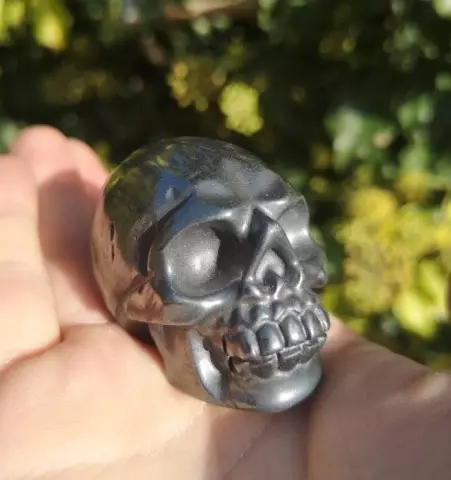- Author Curtis Blomfield [email protected].
- Public 2023-12-16 20:44.
- Last modified 2025-01-23 17:01.
The bones of the skull play a crucial role in protecting the most important human organ - the brain. They are divided into paired and unpaired. They form cavities in which the brain, organs of vision, balance, hearing, taste, and smell are located. The bones at the base of the skull have holes through which nerves exit and arteries pass to the brain.

The cranium has 2 sections: facial (consists of 15 bones) and brain (consists of 8 bones). The facial region is the bone base of the human face, the initial parts of the respiratory and digestive systems. These bones of the skull are located under the medulla. A significant part is occupied by the chewing apparatus, which includes the upper (paired bone) and lower jaw (unpaired). The upper jaw forms the walls of the orbits, the hard palate, the side walls of the cavity and the openings of the nose. The following processes depart from her "body": zygomatic, frontal, alveolar, palatine. The lower jaw is the only movable bone of the skull, which, together with the temporal bones, is involved in the formation of the temporomandibular joints. She has a curved body, on which the alveoli for teeth, articular and coronal processes are located.(chewing muscles are attached to them).

Small facial bones of the skull: paired - palatine, nasal, inferior concha, zygomatic, lacrimal; unpaired - vomer and sublingual. They are part of the oral and nasal cavities, as well as the eye sockets. This also includes a curved arcuate hyoid bone with processes (lower and upper horns).
The medulla of adults consists of the occipital, frontal, sphenoid, ethmoid, parietal and temporal bones. The unpaired frontal bone forms the upper wall of the orbits and the anterior part of the brain region. It has nasal and orbital parts, frontal scales and frontal sinus.
The occipital bone makes up the lower occipital region of the skull. It has the main part, the occipital scales and the lateral masses. The sphenoid bone is located at the base of the skull. It has a complex shape and consists of a body with 3 paired processes. She has a sphenoid sinus in her body.

The ethmoid bone is unpaired. It is an integral part of the nasal cavity and the walls of the orbits. It has a horizontal lattice plate with holes; a perpendicular plate dividing the nose into 2 cavities; ethmoidal labyrinths with middle and superior turbinates that form the nasal cavities.
The parietal bone is paired. It forms the upper lateral sections of the cranial vault. In shape, it resembles a quadrangular plate, concave on the inside and convex on the outside.
Temporal paired bones of the skull are involved in the formation of the jaw joint. They havedistinguish between the pyramid, scaly and tympanic parts. On their lateral surfaces there are openings of the auditory meatus. The temporal bones are pierced by several channels through which blood vessels and nerves pass.
In the brain skull, the upper part (roof or vault) and the lower part (base of the skull) are separated. The bones of the vault are connected with fibrous continuous sutures, and the bases form synchondrosis (cartilaginous joints). The frontal, occipital and parietal bones are connected by serrated sutures, and the bones of the facial region have flat and harmonious sutures. The temporal bone with the sphenoid and parietal is connected by a scaly suture. With age, cartilage joints are replaced by bone tissue, and adjacent bones grow together.
The air bones of the skull differ from others in that they have cavities that are lined with mucous membranes and filled with air. These include the frontal, sphenoid, ethmoid bones and the upper jaw.






